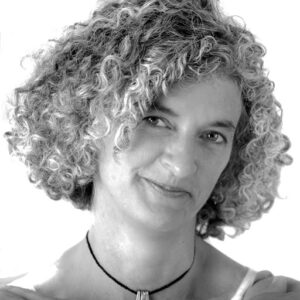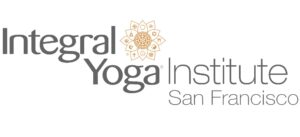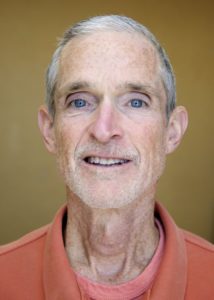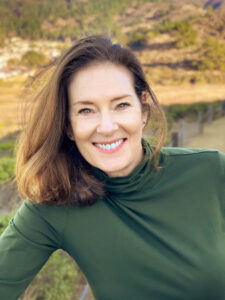Every Pelvis Has a Story
by Leslie Howard
What is the pelvic floor? Many people might respond with a shrug or a blank stare; the slightly more knowledgeable might point to “down there.”
Let’s say I were to ask you what part of the body is the most crucial to maintaining good posture? You might say the feet and legs, or maybe the abdominal muscles. While those parts are important, they are not our foundation, or the part of our body that integrates the head and torso with the legs and the feet. The foundation is the pelvic floor.
But the pelvic floor is more than just the bedrock that supports the rest of our “building”—it houses our energy and influences how we hold ourselves while standing, sitting, walking, or having sex. In other words, the pelvic floor is key to performing our everyday activities.
A few things we probably all know about the pelvis: It has two hip bones. And we can place our hands on these bones to convey how we feel—sexy, impatient, proud, or angry at our partner who is late for dinner.
Needless to say, there’s more to the pelvis than those hip bones. The pelvic floor is a group of muscles situated at the bottom of the pelvis. These muscles are attached to the sitting bones on either side, to the pubic bone in front, and the tailbone in back. These muscles have a serious job: They hold our abdominal organs in and up. They are part of the platform for the vulva and pubic hair. They also manage what goes in and what goes out “down there,” such as urination, defecation, and sexual activity. When the pelvic floor is off balance, everything on top of it—torso, shoulders, neck, head—and everything below it—groins, legs, feet—can be off balance. The pelvis provides a foundation and fulcrum for our entire bodies.
Still think of it as just a resting place for your hands?
Unfortunately, the pelvic floor is often misunderstood, or completely overlooked, by the majority of the medical and wellness community (with the exception of those pioneering physical and occupational therapists who specialize in the pelvic floor).
In the yoga world, the pelvic floor is also underappreciated. While focused on by prenatal yoga classes or schools of yoga that emphasize the pelvic floor contraction known as the “root lock” (mula bandha), outside of a few worthwhile articles on the pelvic floor, you won’t find a lot of yoga-related books on the topic.
Historically, we have mistreated our pelvis. We’ve constrained it with corsets, exaggerated it with bustles, hidden it under muumuu dresses, squeezed it into jeans, tortured it with shapewear (formerly known as girdles), and misaligned it with high heels. It gets flossed with thongs and g-strings, sweetened by lube, perfumed by intimate spray, odor neutralized by douching, and even “rejuvenated” with cosmetic surgery. It’s been manicured, coiffed, and waxed. Why such mistreatment of a crucial part of our bodies?
One answer lies in one guiding principle: political control of the female pelvis by men. Methods include demonization— Cover it, lest a man have temptation; skirts must extend below the knee; erasure of the unique complexities of the female body when doing so suits the needs of medical professionals—The doctor will tell you to give birth on your back, which is easier for him; neutralization—Barbie, anyone? and ridicule—Why do you need all that hair?!? Get rid of it! The female pelvis is desensualized: Quick! Cover up that smell before someone notices it! The female pelvis is shamed: Menstruating? Take your pain meds, hide your tampons, and be discreet! The female pelvis is weaponized: You are cranky today. Are you on the rag? And, finally, the female pelvis is hyper- sexualized and constantly judged: Check your local newsstands for ten surefire ways to please your man and which female star has been deemed overweight this week.
So it’s no wonder that women who dared to take ownership of their pelvic regions were targets for suspicion, ostracized, and feared. I think it’s safe to say that men felt, and continue to feel, a deep unease about the powers of the female pelvis—after all, we have the ability to create, nurture, and deliver life into the world, if we choose, and they simply do not, despite all the advances in modern medicine.
When I started on my journey toward pelvic liberation with yoga, I wasn’t initially focused on how society treats women and their bodies. Eventually, I realized that healing my pelvis required not only knowledge of yoga and anatomy, but also an enhanced awareness of the larger political and cultural forces that have framed our attitudes toward “down there.” What started as a desire to alleviate my pelvic pain became a quest to fully inhabit and understand my body—without shame or embarrassment—and experience the sense of aliveness that flows through all my parts.
To physically look at our pelvis we have to arm ourselves with mirrors and flashlights. To emotionally look at it, we may have to arm ourselves with courage and tissue boxes.
Please consider joining Leslie at her online workshop, Yoga and the Pelvic Floor on Saturday, February 6th from 11:00am-3:00pm PST.

Leslie Howard is an internationally acclaimed yoga educator who pioneered the growing field of yoga for pelvic health, what she calls Pelvic Floor YogaTM. Sonima Health named her one of the top 50 yoga instructors in the USA. University of California, San Francisco medical studies has scientifically demonstrated the effectiveness on Leslie’s techniques for improving women’s pelvic health. This is an excerpt from her book, Pelvic Liberation.






